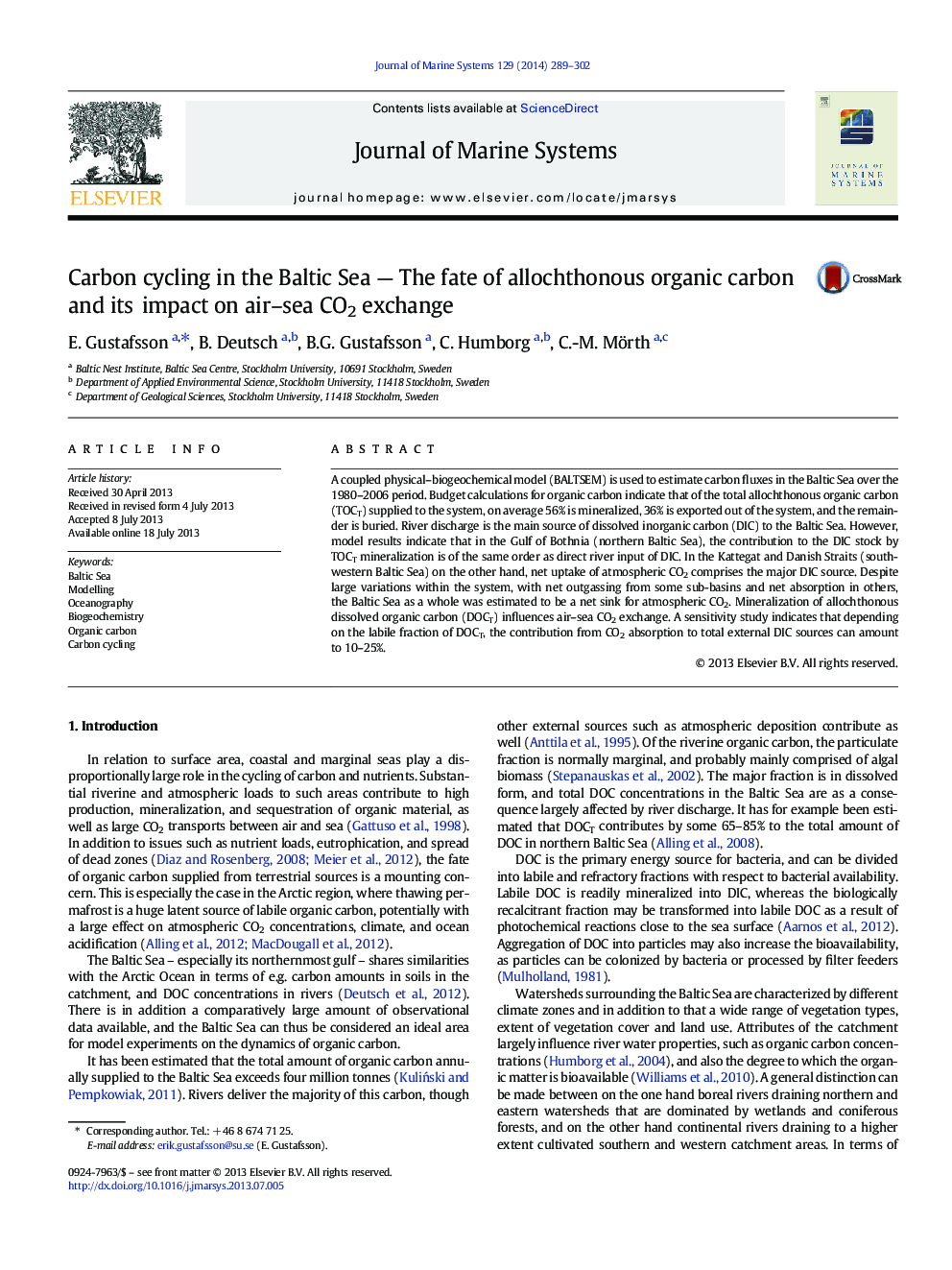| کد مقاله | کد نشریه | سال انتشار | مقاله انگلیسی | نسخه تمام متن |
|---|---|---|---|---|
| 6387150 | 1627300 | 2014 | 14 صفحه PDF | دانلود رایگان |

- The BALTSEM model is used to calculate carbon fluxes in the Baltic Sea.
- About 50% of the supplied terrestrial organic carbon is mineralized in the system.
- Some sub-basins in the system are net sources of CO2 to the atmosphere.
- Results imply that the Baltic Sea as a whole is a net sink for atmospheric CO2.
A coupled physical-biogeochemical model (BALTSEM) is used to estimate carbon fluxes in the Baltic Sea over the 1980-2006 period. Budget calculations for organic carbon indicate that of the total allochthonous organic carbon (TOCT) supplied to the system, on average 56% is mineralized, 36% is exported out of the system, and the remainder is buried. River discharge is the main source of dissolved inorganic carbon (DIC) to the Baltic Sea. However, model results indicate that in the Gulf of Bothnia (northern Baltic Sea), the contribution to the DIC stock by TOCT mineralization is of the same order as direct river input of DIC. In the Kattegat and Danish Straits (south-western Baltic Sea) on the other hand, net uptake of atmospheric CO2 comprises the major DIC source. Despite large variations within the system, with net outgassing from some sub-basins and net absorption in others, the Baltic Sea as a whole was estimated to be a net sink for atmospheric CO2. Mineralization of allochthonous dissolved organic carbon (DOCT) influences air-sea CO2 exchange. A sensitivity study indicates that depending on the labile fraction of DOCT, the contribution from CO2 absorption to total external DIC sources can amount to 10-25%.
Journal: Journal of Marine Systems - Volume 129, January 2014, Pages 289-302